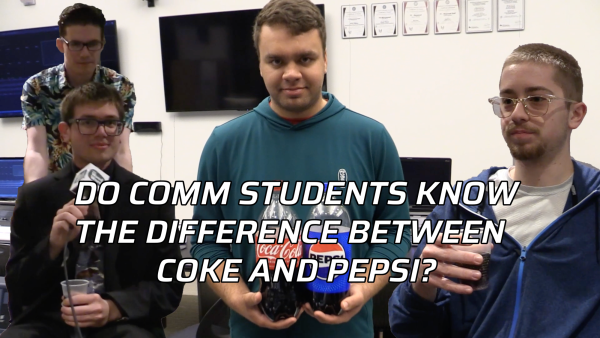OPINION: Reduce, Reuse, Recycle has been a facade
Photo credit/ Liz Berwind
Only 10% of plastic is genuinely recycled.
Since elementary school, the importance of the “three R’s” have been drilled into childrens’ heads. The “three R’s” are: Reduce the amount of waste you are producing, Reuse products and Recycle. In the 1990s, a huge recycling boom was created due to corporate lobbying making its way through legislation and the media, their eyes being on the dollar signs that they felt they could gain from it. .
But now let’s cut to the present where, according to this article from NPR, only 10% of plastic has truly been recycled. The other 90% is just ending up in landfills.
After all these years, it is ridiculous to know that only 10% of plastic is recycled after the practice has been pushed for the state of the environment. Even if there isn’t as big of a market for recyclable material as there once was, that fact just doesn’t sit well with me. As an avid recycler, I am disappointed that we have not come up with a better solution.
Why is that? Why has it been drilled into our heads that recycling is vital when 90% of it is just being wasted?
Well, the saying goes “ignorance is bliss.” By using advertisements and other means, corporations are the reason recycling became the craze in the first place. Through these advertisements, corporate manipulation led its patrons to participate in this practice for the sake of the environment. This idea of “enlightened self-interest” by corporations and other businesses is a money-grab. For these organizations, it was realized that recycling could maximize their profits.
But, recycling is an expensive practice in itself; for a city as large as New York, its Department of Sanitation estimated the cost for recycling pick up during the 2019 fiscal year to be about $686 per ton, but I feel that doesn’t negate the idea that there has to be a better solution. However, just because it is not 100% cost effective, doesn’t mean it is still a beneficial thing to do.
According to this December 2021 article from the Washington Post, the United States is the top contributor to plastic waste. Roughly 8 million metric tons of plastic find their way into the ocean each year. Researchers project that at the end of the decade, that number could reach almost 53 million metric tons of plastic going into our oceans.
It is unacceptable that we’re the leading producers of plastic. Maybe, as a country, we should take notes from European countries like Sweden or the Netherlands.
Sweden is so innovative when it comes to recycling. They separate their waste into different colored bags and then those are separated further into items that can and cannot be recycled. The non-recyclables are then burned in power plants and turned into electricity for homes within the surrounding areas of the power plant.
In the Netherlands, they use their recycled plastics for things like construction. In 2018, the Dutch built a bike path where 100 feet of it is made entirely of recycled plastic.
For 2020, the United States’ population and gross domestic product (GDP) were estimated to be 331 million and $58510.24 USD per capita, respectively. Compare that to Sweden’s roughly 10.38 million inhabitants and their GDP of $51620.70 USD per capita, and the Netherlands’ 17.13 million people and their GDP of $46327.67 USD per capita in 2020.
Clearly the numbers speak for themselves. There is no reason why we can’t do things like Sweden or the Netherlands to make our part of the world better. We have the GDP for it.
Frankly, we should have been doing initiatives like Sweden or the Netherlands have been adopting back in the 1990s when the recycling craze kicked off. Because of our lack of preparation, the world is deteriorating at a quicker rate than it should be.
We aren’t helpless in this though and we can only go up from here. Calling legislators and urging them to improve our recycling system is the first step in solving the issue.
Contact the writer: [email protected]

Cheyenne Amick is a second-year journalism student and is the News Editor for The Wood Word. She is one of the sports anchors for TV-Marywood, and also...















